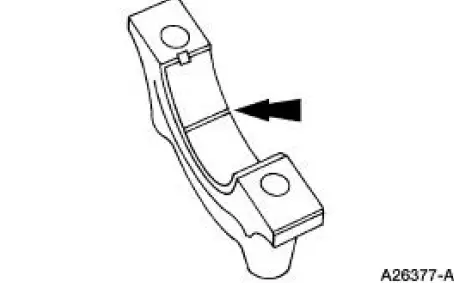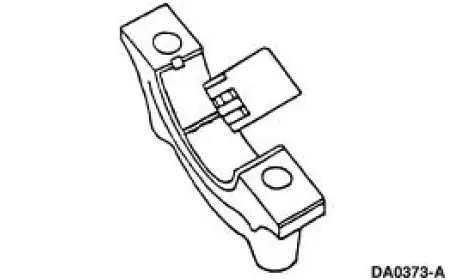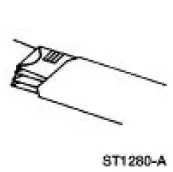Ford Mustang (1999-2004) Service Manual: Connecting Rod - Bearing Journal Clearance
Special Tool(s)
|
|
Plastigage 303-D031 (D81L-6002-B) or equivalent |
NOTE: The crankshaft connecting rod journals must be within specifications to check the connecting rod bearing journal clearance.
1. Remove the connecting rod bearing cap.
2. Position a piece of Plastigage across the bearing surface.

3. NOTE: Do not turn the crankshaft during this step.
Install and tighten to specifications, then remove the connecting rod bearing cap.
4. Measure the Plastigage to get the connecting rod bearing journal clearance. The Plastigage should be smooth and flat. A changing width indicates a tapered or damaged connecting rod or connecting rod bearing.
- Refer to the appropriate section in Group for the procedure.
- If out of specification, install new components as necessary. Refer to the appropriate section in Group for the procedure.

 Connecting Rod - Twist
Connecting Rod - Twist
1. Measure the connecting rod twist on a suitable alignment fixture.
Follow the instructions of the
fixture manufacturer. Verify the measurement is within specification.
Refer to the appropriat ...
 Connecting Rod - Side Clearance
Connecting Rod - Side Clearance
1. Measure the clearance between the connecting rod and the crankshaft.
Verify the measurement
is within specification.
Refer to the appropriate section in Group for the procedure.
If out of ...
Other materials:
Assembly
1. Inspect the clutch cylinder thrust surfaces, piston bore and clutch plate
serrations for scores or
burrs. Minor scores or burrs may be removed with crocus cloth. Install a new
clutch cylinder if
badly scored or damaged.
2. Check the fluid passage in the ...
Removal
1. Disconnect the battery ground cable. For additional information, refer to
Section.
2. Remove the transmission.
3. Remove the air intake scoop. For additional information, refer to Section.
4. Remove the air cleaner outlet tube. For additional informatio ...
Clutch Pedal - Quadrant and Pawl Assembly
Removal
1. Disconnect the battery ground cable (14301).
2. Loosen the nut from inside the engine compartment.
3. Loosen the nuts from inside the vehicle.
4. Loosen the screw.
5. Disconnect the brake pedal position (BPP) switch electrical connector.
...

